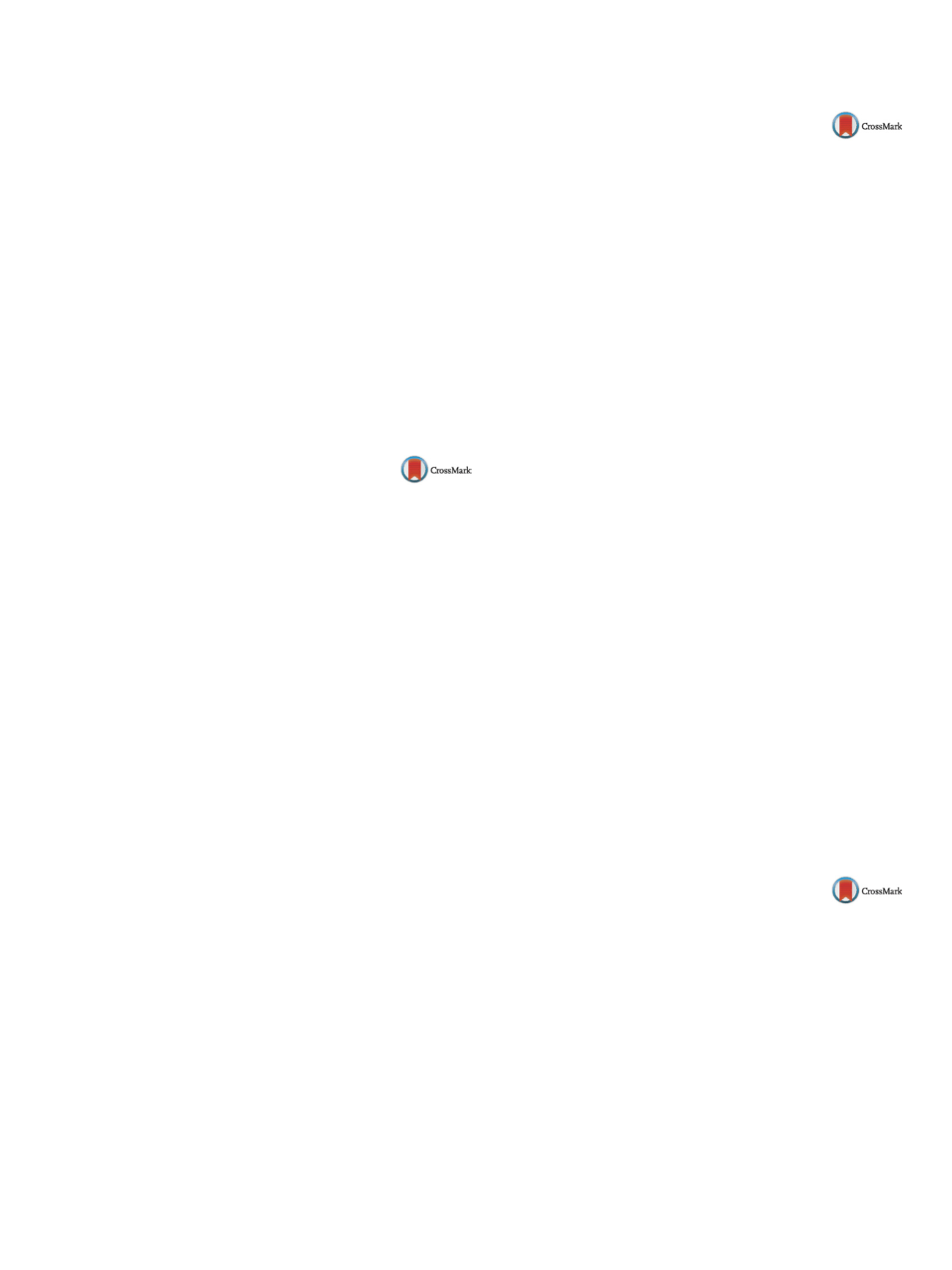

25th European Congress of Psychiatry / European Psychiatry 41S (2017) S521–S582
S531
adjustment for covariates (including sex, maternal education, fam-
ily social class, parental conflict, bullying andmaternal depression).
Results
After adjusting for potential confounders, we found no
evidence for an association between screen time and anxiety
(OR = 1.02; 95% CI 0.95–1.09). Therewasweak evidence that greater
screen timewas associatedwith a small increased risk of depression
(OR = 1.05, 95% CI 0.98–1.13).
Conclusions
Our results suggest that young people who spend
more time on screen-based activities may have a small increased
risk of developing depression but not anxiety. Reducing youth
screen time may lower the prevalence of depression. The study
was limited by screen time being self-reported, a small sample size
due to attrition and non-response, and the possibility of residual
confounding. Reverse causation cannot be ruled out.
Disclosure of interest
The authors have not supplied their decla-
ration of competing interest.
References
[1] PMID: 26303369.
[2] PMID: 21807669.
http://dx.doi.org/10.1016/j.eurpsy.2017.01.719EV0390
Cross-cultural adaptation, reliability,
and validity of the revised Korean
version of Ruminative Response Scale
W. Kim
Inje University Seoul Paik Hospital, Psychiatry, Seoul, Republic of
Korea
Objective
Rumination is a negative coping strategy defined as
repetitive and passive focusing on negative feelings such as depres-
sion. The Ruminative Response Scale (RRS) is a widely used
instrument to measure rumination, but there is continuing argu-
ment about the construct validity of the RRS, because of probable
overlap between the measurement of depression and that of rumi-
nation. The RRS-Revised, which removed 12 items of the RRS,
is suggested as a more valid instrument for measuring rumina-
tion. Therefore, we translated RRS-R into Korean and explored
the reliability, validity and factor structure in patients with major
depressive disorders.
Methods
Seventy-nine patients with major depressive disor-
der took the Korean version of RRS, RRS-R, State Trait Anxiety
Inventory, Beck Depression Inventory and Penn State Worry Ques-
tionnaire. We performed exploratory factor analysis of RRS-R, and
tested construct validity, internal reliability and test-retest reliabil-
ity.
Results
The internal and test-retest reliability of RRS-R was high.
Factor analysis revealed that RRS-R is composed of two factors.
“Brooding” factor explained 56.6% and “Reflection” factor explained
12.5%. RRS-R, especially “Brooding” factor, was highly correlated
with other clinical symptoms such as depression, anxiety and
worry.
Conclusions
In this study, we find out the RRS-R is more reliable
and valid than the original RRS in Korean patients with depression
because the RRS-R is free from the debate about the overlap of item
with BDI. We also revealed that “Brooding” is highly correlatedwith
depressive symptoms. RRS-Rmay be a useful instrument to explore
the implication of “Brooding” in depression.
Disclosure of interest
The author has not supplied his/her decla-
ration of competing interest.
http://dx.doi.org/10.1016/j.eurpsy.2017.01.720EV0391
The role of disturbed circadian clocks
in the development of depression-like
behavior and metabolic comorbidity
in mice
D. Landgraf
1 ,∗
, R. Barandas
2, J.E. Long
1, C.D. Proulx
3,
M.J. McCarthy
1, R. Malinow
3, D.K. Welsh
11
University of California- San Diego, Department of Psychiatry and
Center for Circadian Biology, San Diego, USA
2
Hospital de Santa Maria- Centro Hospitalar Lisboa Norte,
Department of Psychiatry, Lisbon, Portugal
3
University of California- San Diego, Department of Neurosciences,
San Diego, USA
∗
Corresponding author.
Major depressive disorder (MDD) is often associatedwith disturbed
circadian rhythms. However, a definitive causal role for functioning
circadian clocks in mood regulation has not been established. We
stereotactically injected viral vectors encoding short hairpin RNA to
knock down expression of the essential clock gene
Bmal1
into the
brain’s master circadian pacemaker, the suprachiasmatic nucleus
(SCN). In these SCN-specific
Bmal1
-knockdown (SCN-
Bmal1
-KD)
mice, circadian rhythms were greatly attenuated in the SCN. In
the learned helplessness paradigm, the SCN-
Bmal1
-KD mice were
slower to escape, even before exposure to inescapable stress. They
also spent more time immobile in the tail suspension test and less
time in the lighted section of a light/dark box. The SCN-
Bmal1
-KD
mice also showed an abnormal circadian pattern of corticosterone,
and an attenuated increase of corticosterone in response to stress.
Furthermore, they displayed greater weight gain, which is fre-
quently observed in MDD patients. Since the circadian system
controls important brain systems that regulate affective, cognitive,
and metabolic functions, and neuropsychiatric and metabolic dis-
eases are often correlated with disturbances of circadian rhythms,
we hypothesize that dysregulation of circadian clocks plays a cen-
tral role in metabolic comorbidity in psychiatric disorders. In fact,
circadian rhythm disturbances have been linked to individual psy-
chiatric and metabolic disorders, but circadian aspects of such
disorders have not been considered previously in an integrated
manner. Treating and preventing disturbances of circadian clocks
in patients suffering psychiatric and metabolic symptoms may be
a central element for therapies targeting both disorders concur-
rently.
Disclosure of interest
The authors have not supplied their decla-
ration of competing interest.
http://dx.doi.org/10.1016/j.eurpsy.2017.01.721EV0392
Cerebral correlates of emotional
interference processing in the elderly
with subthreshold depression:
A functional fMRI study
J. Li
∗
, H. Zhou
Chinese Academy of Sciences, Institute of Psychology, Beijing, China
∗
Corresponding author.
Introduction
Compared to healthy controls, adults with major
depressive disorder (MDD) showed stronger activation in dorsolat-
eral prefrontal cortex (DLPFC) and anterior cingulate cortex (ACC)
in resolving emotional conflict. Whether subthreshold depression
(StD) at an advanced age is also accompanied by similar changes
in brain activation in coping with emotional conflict remained
unknown.
Objectives
By using face-word Stroop task, the current study
explored the neural correlates of emotional interference processing
in old adults with StD.


















